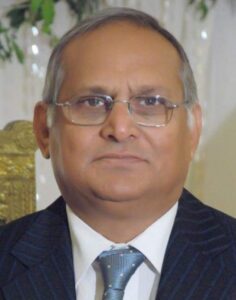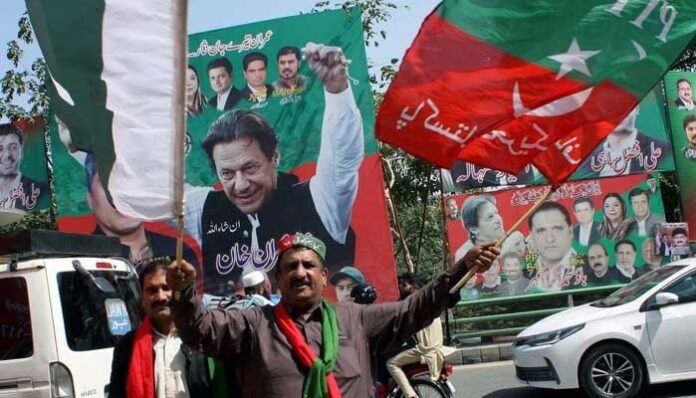By Ghulam Haider Shaikh
The Pakistan Tehreek-e-Insaf (PTI) has finalized its nationwide protest plan, scheduled for August 5 under the banner of the “Movement for the Protection of Pakistan’s Constitution.” This comes not merely as a reaction to recent events but as a calculated political maneuver amid an increasingly tense environment. While the right to protest is enshrined in democratic systems, the character, intent, and consequences of such actions often define whether they strengthen democracy, or strain it further.
According to PTI’s central leadership, the protests will be held across all four provinces, with a major rally outside Rawalpindi’s Adiala Jail, where party founder Imran Khan remains incarcerated. PTI Senators and MNAs are to converge at the jail, while members of provincial assemblies will organize coordinated demonstrations within their respective constituencies. At the national level, the protest is being orchestrated by Secretary General Salman Akram Raja, demonstrating a centralized and deliberate push by the party machinery to stage its comeback in the public and political narrative.
The date of August 5 carries special symbolism for PTI: it marks the second anniversary of Imran Khan’s arrest. By choosing this day to launch a constitutionally framed protest, the party aims to not only highlight what it claims are injustices in the legal system but also to draw attention to what it sees as the erosion of democratic norms. Former Speaker Asad Qaiser and other PTI stalwarts have stated unequivocally that the protests will be peaceful, non-violent, and guided by the principles of law and the Constitution. The party has emphasized its commitment to avoiding any confrontation with law enforcement agencies, claiming it seeks dialogue, not disruption.
Symbolism is key to this movement. Protesters have been urged to carry the national flag and white flags as emblems of peace. This calculated messaging is intended to reframe PTI’s image from one associated with last year’s confrontations to a party seeking legal redress and democratic inclusion. The tone is reconciliatory, but the stakes remain high.
The government, for its part, appears determined to maintain order. Section 144 has been imposed in Islamabad and Rawalpindi, and dozens of PTI workers have reportedly been detained in advance. Such pre-emptive action often raises alarms about the balance between state security and political freedom. While the state has a duty to prevent unrest, over-policing can trigger the very disturbances it seeks to avoid.
Crucially, the success or failure of these protests will not be measured solely by attendance or slogans. Rather, it will be judged by whether they contribute to Pakistan’s democratic evolution, or deepen its political fragmentation. In this regard, both PTI and the ruling coalition carry responsibilities.
For PTI, it is essential to show restraint and maturity. The party has already faced significant backlash for past protests that devolved into disorder. If it wishes to regain political capital and public trust, it must lead a movement that upholds democratic values in both spirit and form. That includes ensuring that protests are not used to intimidate institutions or provoke unnecessary confrontation.
On the other hand, the government must avoid the temptation to treat political opposition as a law-and-order problem. The repeated use of state apparatus to silence dissenting voices, even if legally justifiable, can foster political alienation and fuel further unrest. Democracy cannot be selective; it must be defended even when it is inconvenient for those in power.
Second, it is vital that the federal and provincial governments provide political space for peaceful protest and public expression. Denial of such space only pushes opposition movements into the shadows, where frustration breeds radicalism. Political pluralism is not a weakness—it is the strength of any democratic society. Dialogue, not suppression, is the only viable long-term strategy for political stability.
Moreover, the larger issue here is not the protest itself but the growing trust deficit between political stakeholders and state institutions. Protests, however well-organized, cannot be a substitute for institutional reform, electoral transparency, and consistent rule of law. If PTI genuinely seeks to safeguard the Constitution, it must commit to institutional dialogue, legal processes, and systemic change.
What remains to be seen is whether this protest will become a turning point. Can PTI leverage the moment to rebrand itself as a constructive democratic actor? Will the government show magnanimity in tolerating peaceful dissent? And most importantly, can Pakistan’s democratic framework emerge stronger from yet another round of political polarization?
In a country burdened by economic uncertainty, security threats, and external pressure, political stability is not a luxury, it is a necessity. All stakeholders must recognize that constitutionalism cannot be defended in isolation. It requires consistent commitment, shared responsibility, and mutual respect across party lines.
If August 5 is to be remembered for anything, let it be for a renewed commitment to peaceful politics and democratic integrity, not another step in Pakistan’s long march of discord.

